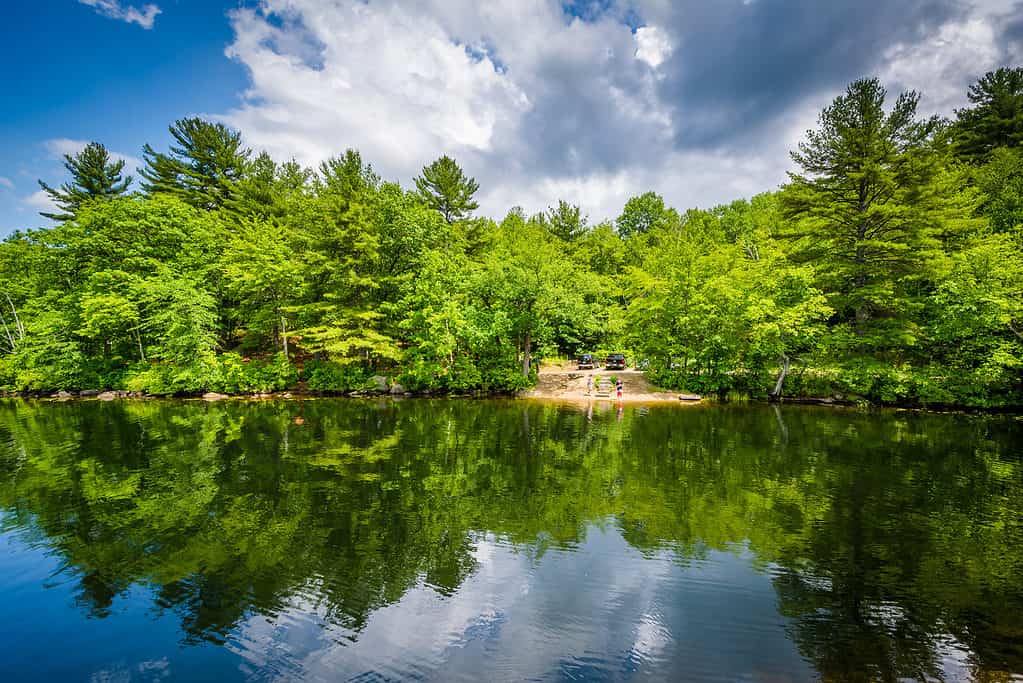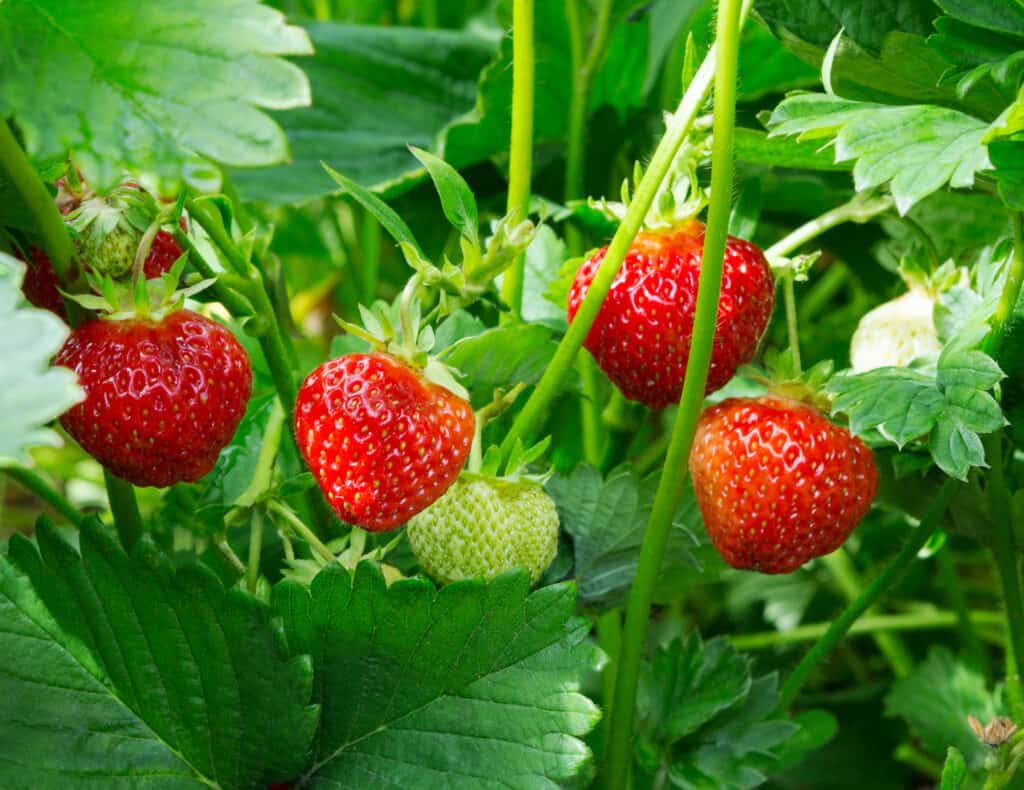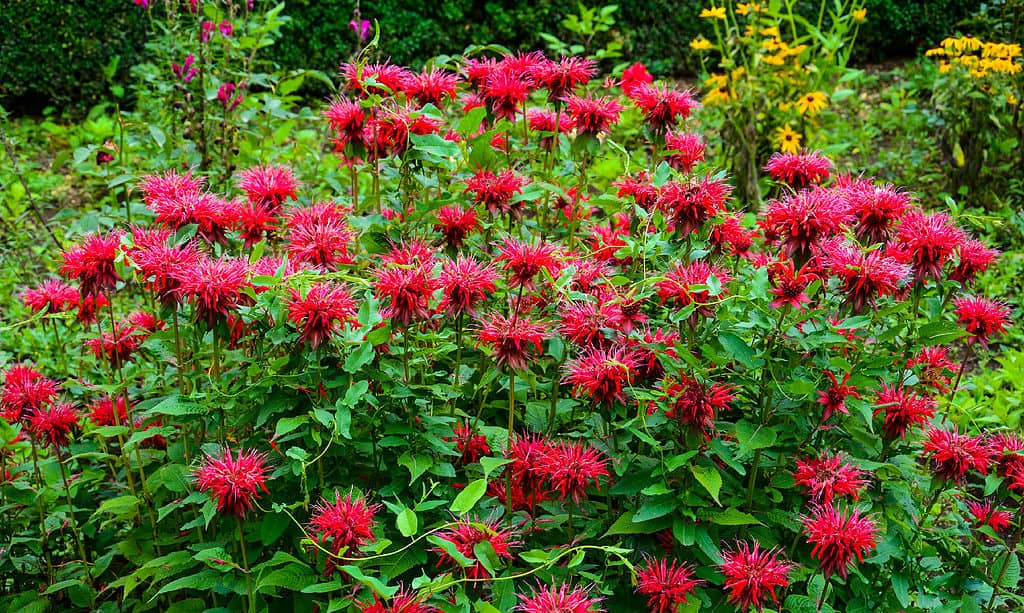New Hampshire is a paradise for gardeners, from its stunning rolling hills in the north to its spectacular shoreline along the Atlantic Ocean. But with changing weather patterns and distinct seasons, mastering gardening in The Granite State takes careful planning and understanding local climate conditions. To help you start your journey towards horticultural success, we’ll provide insight into what types of vegetables, herbs, flowers, or other plants thrive here – making your dream garden a reality!

New Hampshire
is a paradise for gardeners.
©iStock.com/Jon Bilous
Understanding New Hampshire’s Climate and Weather
Understanding your region’s hardiness zone is crucial for selecting plants that thrive in the local climate. New Hampshire experiences four distinct seasons, each with weather conditions influencing gardening practices. The state is divided into two USDA hardiness zones – Zone 4b in the northern regions and Zone 5a in the southern areas.
Spring
Spring in New Hampshire can be unpredictable, with temperatures ranging from chilly to mild. Gardeners should be prepared for late frosts, which can damage tender plants. It is essential to start seeds indoors or use frost protection techniques, including row covers, to safeguard young plants.
Summer
Summers are generally warm and humid, providing ideal growing conditions for many plants. However, periods of drought can occur, making it necessary to monitor soil moisture and provide supplemental irrigation when needed.
Fall
Fall brings cooler temperatures and vibrant foliage, making it an excellent time to plant perennials and cool-season vegetables. Gardeners should also take advantage of this time to prepare their gardens for the upcoming winter.
Winter
Winters in New Hampshire can be harsh, with heavy snowfall and freezing temperatures. It is essential to protect plants and garden beds with proper mulching and insulation to help them survive the winter months.
Vegetables, Herbs, and More: Ideal Choices for New Hampshire Gardens

Strawberries
,
raspberries
, and
blueberries
all grow well in New Hampshire.
©iStock.com/romiri
When planning a garden in New Hampshire, selecting plants that thrive in the local climate is essential. Here are some excellent options for vegetables, herbs, and other plants that thrive in this environment:
Tomatoes
Tomatoes are a popular garden choice in New Hampshire. Choose early-maturing or cold-tolerant varieties, such as ‘Early Girl,’ ‘Glacier,’ or ‘Sub-Arctic Plenty,’ to ensure a bountiful harvest before the first frost arrives.
Peas
Peas are a cool-season crop you can sow in early spring or late summer for a fall harvest. They are appropriate for New Hampshire’s climate and provide a tasty, healthy addition to any garden.
Leafy greens
Spinach, kale, Swiss chard, and lettuce are all excellent choices for New Hampshire gardens. You can plant these cool-season crops in early spring or fall. Wide varieties can tolerate light frosts, making them ideal for the region’s changing weather.
Root vegetables
Carrots, beets, turnips, and parsnips thrive in New Hampshire’s cool temperatures, and you can throughout the fall and winter.
Herbs
Hardy herbs, such as chives, thyme, sage, and oregano, you can cultivate them in New Hampshire gardens. These plants are generally low-maintenance and can provide fresh flavors to your meals throughout the growing season.
Flowers
New Hampshire’s climate supports various beautiful flowers, including perennials like coneflowers, bee balm, and daylilies and annuals like marigolds, zinnias, and cosmos. Planting a mix of flowers adds color to your garden and attracts beneficial insects and pollinators.

Planting a mix of flowers adds color to your garden and attracts beneficial insects and pollinators.
©Vahan Abrahamyan/Shutterstock.com
Squash and Pumpkins
Both summer and winter squash varieties and pumpkins successfully in New Hampshire. They require a longer growing season, so choosing early-maturing types and starting seeds indoors before transplanting them outdoors is essential.
Beans
Pole and bush beans are ideal for the New Hampshire climate, as they thrive in warm summer temperatures. Plant beans after the danger of frost have passed, and choose varieties with a shorter growing season to ensure a successful harvest.
Cucumbers
Cucumbers are another warm-season vegetable that can be grown in New Hampshire gardens. Choose disease-resistant varieties and support vining types to maximize garden space and productivity.
Berries
Strawberries, raspberries, and blueberries all grow well in New Hampshire. These fruit-bearing plants require some initial investment and care but will reward you with delicious, homegrown fruit for years.
Tips for Successful Gardening in New Hampshire

Encourage beneficial insects, such as
ladybugs
and
lacewings
, by planting flowers and herbs in your garden.
©iStock.com/Pavel Abramov
Choose the right plants
Selecting plants well-suited to your hardiness zone and local climate is critical for gardening success. Consult local gardening resources and nurseries for recommendations on the best varieties for your area.
Prepare the soil
Healthy soil is the foundation of a thriving garden. Test your soil to ensure it has the proper pH and nutrient levels to support plant growth. Amend your garden beds with organic matter, such as compost, to improve soil fertility and structure.
Start seeds indoors
To extend the growing season and protect tender plants from late frosts, start seeds indoors 4-6 weeks before the last expected frost date. This will give your plants a head start and help ensure a successful harvest.
Practice crop rotation
Rotating crops helps prevent the buildup of pests and diseases in your garden. Change the location of your plantings each year, grouping plants with similar needs and growing habits together.
Use organic pest control methods
Encourage beneficial insects, such as ladybugs and lacewings, by planting flowers and herbs in your garden. Practice companion planting to deter pests and utilize physical barriers, such as row covers, to protect vulnerable plants.
Conserve water
New Hampshire can experience periods of drought, making it essential to use water-saving techniques in your garden. Mulch your garden beds to retain soil moisture, and utilize drip irrigation or soaker hoses to deliver water directly to plant roots.
Prepare for winter
Proper winter preparation is crucial for the survival of your plants. Protect perennials and garden beds with mulch, and insulate tender plants with burlap or frost blankets to shield them from harsh winter conditions.

Selecting plants well-suited to your hardiness zone and local climate is critical for gardening success.
©Miriam Doerr Martin Frommherz/Shutterstock.com
Conclusion
Gardening in New Hampshire can be a rewarding experience, providing you with a beautiful and productive outdoor space. By understanding the local climate, choosing appropriate plants, and implementing successful gardening practices, you can cultivate a thriving garden that will bring joy to your home and table throughout the seasons.
The photo featured at the top of this post is © vaivirga/Shutterstock.com
Thank you for reading! Have some feedback for us? Contact the AZ Animals editorial team.






